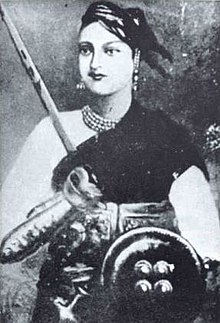Five Female Freedom Fighters You Should Know
- Shalome Seth
- Aug 16, 2020
- 2 min read
1. Sarojini Naidu

Born in 1879, the Nightingale of India was a poet and activist. In 1905 she joined the Indian National Movement. In India in 1915-18, she travelled to different places to speak about social welfare, women's empowerment and nationalism. In 1917, she established the Women's Indian Association (WIA). Sarojini Naidu became the first female governor of India and served as the governor of United Provinces of Agra and Awadh from 1947 till her death in 1949.
2. Rani Lakshmi Bai (Jhansi ki Rani)

The most iconic freedom fighter, Rani Lakshmi Bai fought the British during the siege of Jhansi which lasted for about two weeks. With her son strapped to her back, Rani Lakshmi Bai was a force of nature. She trained men and women to fight in her army, proving that anyone can defend their nation.
3. Aruna Asaf Ali

Asaf Ali, Aruna had contacts with the leaders of the Indian freedom struggle, due to her husband, and became an active member of the Congress. She was incarcerated in 1931, and was only realised after other women prisoners refused to leave the premises until she was also released. In 1932, she was arrested again and held in Tihar Jail, where she launched a hunger strike to protest the treatment of other political prisoners. She was moved to solitary confinement in Ambala, and was politically inactive after her release for 10 years until the Quit India Movement in 1942.
4. Vijaya Lakshmi Pandit

Pandit actively participated in the freedom struggle that led to her imprisonment. She was arrested thrice between 1932-1933, 1940, and 1942-1943. Later, she played a key role in the construction of the constitution. She led the Indian delegation to the United Nations between 1946–48 and 1952–53. In 1953 she became the first female president of the UN General Assembly.
5. Bhikaiji Cama

An eminent personality of the Indian Nationalist Movement, she was born on 24th September, 1861. She emphasised on equality between men and women. She donated all her assets to help out an orphanage for young girls. As an Indian ambassador, she also travelled to Germany in 1907 to hoist the Indian National flag for the first time internationally. Despite being in exile and unable to return to India, she continued the fight from abroad.



Comments